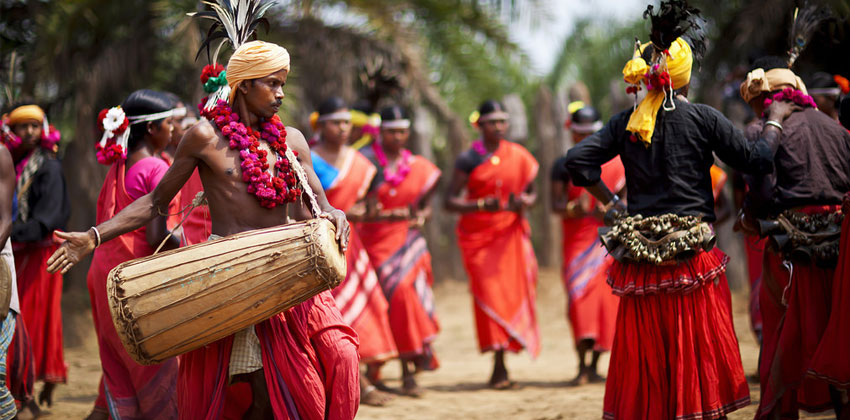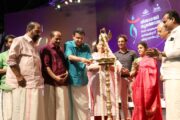Odisha – India’s best kept secret

Chances are that very few domestic travellers may be looking at Odisha as a travel destination. Its tourism brand is not as strong as some of the other states and hence people tend to overlook it. But things are changing. Its temples, architecture, natural beauty, beaches, lakes and music have begun to attract tourists. Moreover, Odisha is known as an ancient
civilization. Let’s look at the key destinations.
Jagannath Temple, Puri is one of the most sacred pilgrimage destinations in Odisha. It is the temple of Lord Vishnu and holds great significance.
Sun Temple, Konark : This is a World UNESCO heritage site. It was built in the 13th century and is known for its marvellous architecture. It is dedicated to Lord Sun or Surya. This temple has a unique architecture compared to other temples and was built in the shape of Lord Surya’s chariot. Europeans called it the `Black Pagoda.’ It was built in the Kalinga architectural style.
Lingaraja Temple, Bhubaneshwar is not only the largest temple in Bhubaneshwar but also in the whole state. It is said that the construction of this temple can be dated back to the 8th century and it is built in the shape of a sanctuary tower.
Brahmeswara Temple Old, Bhubaneswar: Dedicated to Lord Shiva, the construction of this temple can be dated back to the 9th century which makes it one of the oldest temples in Odisha. It was established during the Somvanshi Dynasty. It has historical and architectural significance and is a must-visit for those who love history and mythology. This temple is carved out of a single stone and is known for its architectural marvel.
Arts Culture of Odisha
Pattachitra (Cloth Painting): Literally, ‘Patta’ translates to cloth and ‘Chitra’ means picture. The themes and motifs are mythological, typically revolving around the Jagannath and Vaishnava sect.
Rock Paintings: Rock art in Odisha dates back to the prehistoric period according to the earliest reports found at Viramkhol in Jharsuguda district.
Sand Art: With clean, fine-grained sand and water as its raw materials, this is an indigenous form of art that found its origin recently, compared to other forms of art. It is practised on the beaches of Puri with subjects ranging from Hindu deities to international occasions.
Silver Filigree: Locally known as ‘Tarakasi’, this art form is about 500 years old. It hails from Cuttack. The process consists of drawing silver through a series of consecutively smaller holes to produce fine strands of wire.
Appliqué work: This is a famous fabric craft originating from a village called Pipili where locals call it ‘Pipili Chandua Kama’. Unknown to many, Pipili holds an entry in the Limca Book of Records for the world’s largest thematic applique work.
Music: Odisha is predominantly a land of tribes and each tribe has its distinct song and style of dance. Anyone delving into the vast pool of elements that define Odisha’s culture must definitely take into account the Odissi music which forms a whole branch of Indian classical music.
Dalkhai (Sambalpuri): Ask any Odia about Odisha’s folk dances and ‘Sambalpuri’ might be the first thing you will hear. There are many other forms of Sambalpuri dance but Dalkhai is the most famous one. It originated in the tribes of Sambalpur and is continued to be performed especially in festivals like Dussehra.
Simlipal National Park in Odisha is in a beautiful and scenic town. Situated in Mayurbhanj, it once used to be a hunting ground for the rulers of the province. Simlipal is the largest national park in Odisha and is also considered as one of the principal tiger projects in India. The area is rich with dense forests, striking meadows, startling waterfalls and beautiful rivers. It is blessed with great bio-diversity and huge varieties of fauna that make it a great place to engage in wildlife sightseeing! Simlipal Reserve is home to more than 1000 varieties of plants and a large variety of wildlife.
Bhitarkanika National Park & Wildlife Sanctuary : Home to some of the rarest species in the world both flora and fauna, the sanctuary is mainly known for its species of reptiles especially crocodiles. However, it also attracts a plethora of migrant species like Olive Ridley Sea Turtles, Asian Open Bill, Black Ibis, Egrets, and Darters etc. In the winter (which is the ideal migrating season for avifauna species), you can find as many as 215 species of migratory birds. The highlight of the wildlife sanctuary is the rare white crocodile that can grow up to 23 feet. Another attraction of the region are the sprawling mangrove trees making it the second largest mangrove forest in India. There are several entrances available for the park, the most popular one of which is boating from Khola to Dangmal.
Tikarpada Wildlife Sanctuary: with its overwhelming beauty and lush green surrounding is a major attraction. The ever-cherished rambling of River Mahanadi besides the very famous Satkosia gorge and vast variety of species of wild animals, birds and plants.
Chilika wildlife sanctuary is a paradise on Earth for bird watchers and nature lovers, and is the largest internal salt water pond that can be found in Asia. The pear-shaped lake is dotted with a few small islands and has fisheries and salt pans around its shore. This wildlife sanctuary in Odisha is nestled in the heart of the coastal state and extends from Puri district in the north to Ganjan district in the south, and is separated from the Bay of Bengal by a 60 kilometres long narrow strip of sand-flats and marshy islands.
Sunabeda wildlife sanctuary in Odisha, India, is located in the valleys of the Koraput region. The place has lush valleys which attracts tourists towards its natural landscape. Moreover, an Aero-Engine Factory has been established at this place. The national highway 43 which runs over the mountains offers an unforgettable experience while travelling to Sunabeda.



